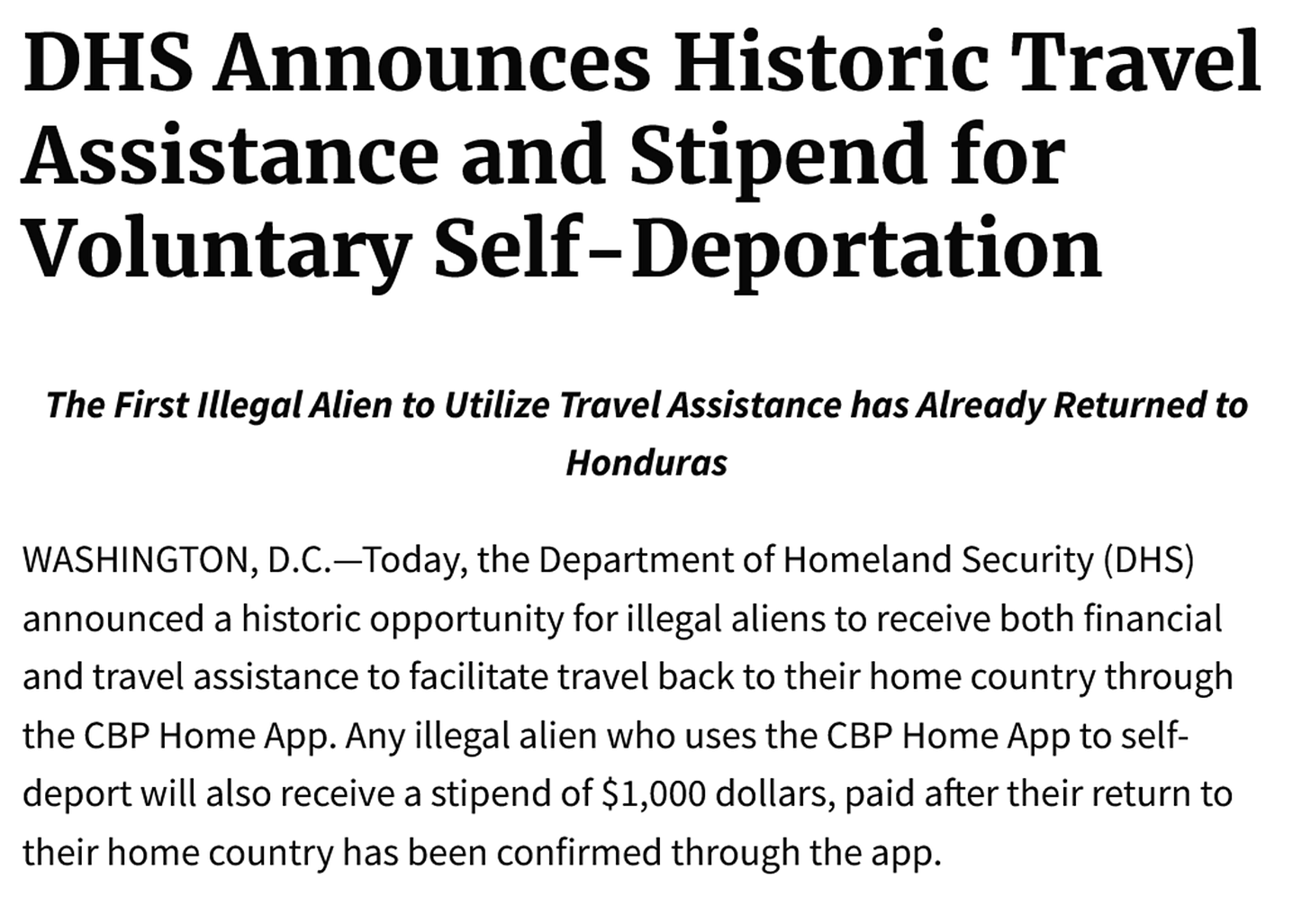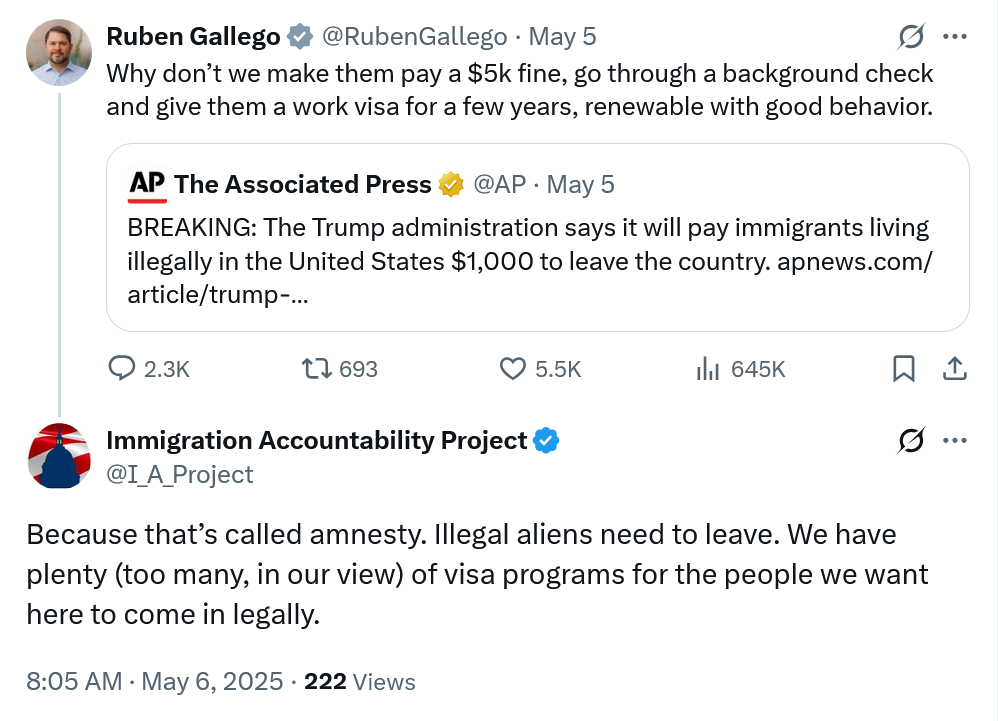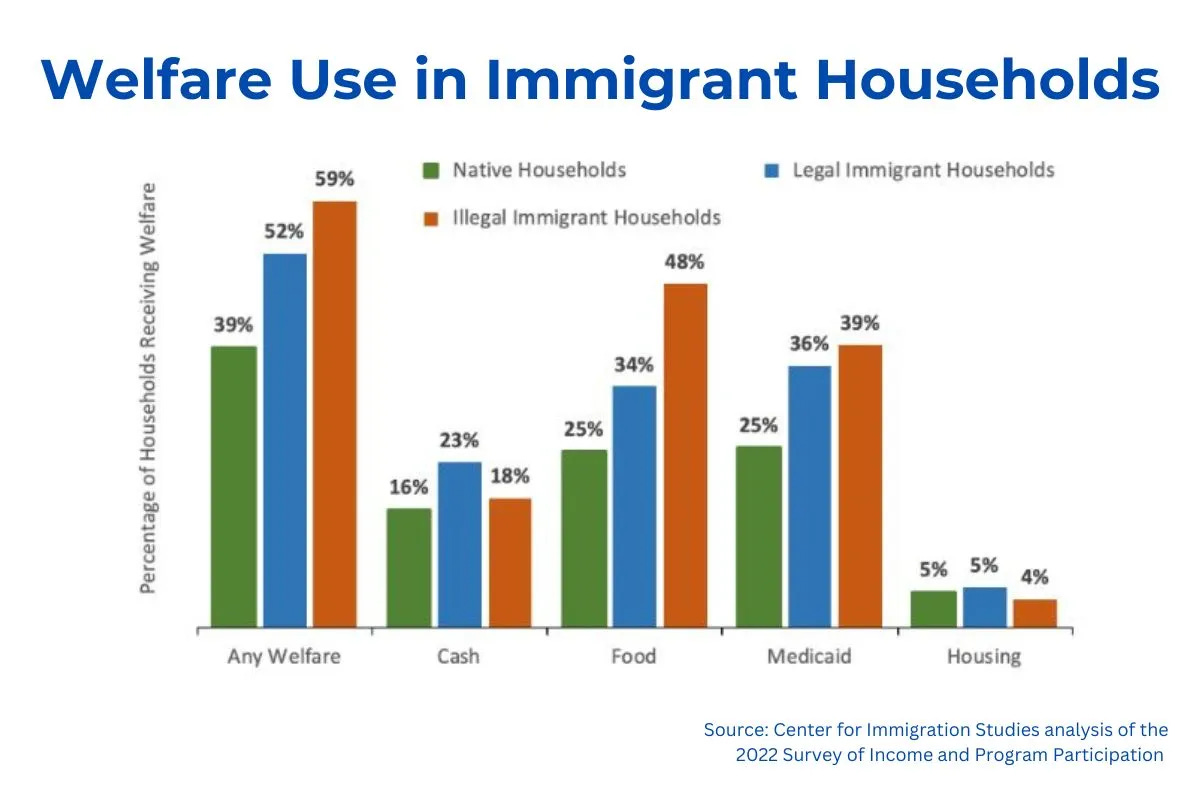“There’s An App For That!”
On May 5, 2025, the U.S. Department of Homeland Security (DHS) announced a novel initiative to encourage undocumented immigrants to voluntarily leave the United States. The program offers a $1,000 stipend and travel assistance, including commercial flight costs, to those who opt for self-deportation through the rebranded CBP Home app (previously CBP One under the failed Biden administration).

The DHS’s projected average cost, $4,500 per deportee—or the payment plus average air travel costs—is significantly lower than the $17,121 dollars per illegal it costs the American taxpayer to deport an illegal alien by force. The DHS secretary emphasized the program’s benefits, stating, “If you are here illegally, self-deportation is the best, safest, and most cost-effective way to leave the United States to avoid arrest.”
Leveraging the CBP Home app to streamline voluntary departures has already proven viable—more than 5,000 immigrants had self deported in just the few first weeks of CBP Home’s launch.
The app has also been downloaded by more than 300,000 people since January, averaging 1,500 daily downloads. There is clearly a large cohort of illegal aliens willing to self deport as White Papers has long believed based on the experience of Operation Wetback in the middle of the 20th century.
Illegal immigrants who do depart the United States using CBP Home will only receive their payment upon confirmation of having returned to their home country. The program also offers incentives beyond financial aid. Participants are deprioritized for detention and removal by Immigration and Customs Enforcement (ICE) as long as they demonstrate progress toward departure. DHS claims that self-deportation through the app “may help preserve the option for an illegal alien to re-enter the United States legally in the future,” though, thankfully, no specific legal pathway was outlined. (As it stands, if an illegal alien is deported from the US, they must wait 5—20 years before attempting legal entry.) The department projects that the initiative will reduce deportation costs by approximately 70%, citing the high expense of locating, detaining, and forcibly removing illegal aliens.
This is an undeniably pro-American move that even if moderately successful could undue years of mass immigration related damage to the demographic character of American communities, and yet there are those that oppose it. Second-generation immigrant and Congressman Rubén Gallego (D-Arizona) proposed that instead of paying illegal aliens who broke American laws and violated American sovereignty to leave, we should let them stay!
Gallego wants to “fine” illegal aliens $5,000 and give them legal residency contingent upon a background check.

This proposal is entirely unviable. Illegal aliens cost the American taxpayer $68,000 per individual according to the Center for Immigration Studies while the Federation for American Immigration Reform (FAIR) estimates that each illegal alien costs the taxpayer $1,156 per year and each of their children (legal or illegal) costs the American taxpayer $8,776 per year—there are 4.4 million underage children of illegal aliens in the United States. Beyond cost, the American people never voted for mass immigration and have voted against it whenever given the opportunity for decades.
Most importantly, this self-deportation initiative reflects a broad shift in Trump’s immigration strategy from simple immigration enforcement to active paid repatriation.
It is fantastic that the administration is concerned with balancing high-profile, high-expense enforcement with saving the American taxpayer money and federal agents time to focus on the more recalcitrant immigrants. But the real story is that the administration is willing pay illegal immigrants to leave the United States.
If it works for illegal immigrants, what about legal immigrants? At White Papers, we previously cited research from Monmouth University showing that 45% of minority Americans would like to settle in a foreign country if they were “free to do so.” Few of these often second-generation immigrants truly identify as Americans.
Those Who Want to Go: A More Expansive Great Repatriation
In the first three pieces of our landmark Great Repatriation series, we outlined the most practical policy-based methods to repatriate recent immigrants and their descendants, and increase the Historic American share of the US Population. Specifically, we found that roughly 51 million people, immigrants, and their (underage) US-born children could be re…
Expanding repatriation policy is also necessary if the administration hopes to meet its fiscal goals. In just one example, Hispanics (who are overwhelmingly immigrants and their children) utilizing welfare programs prodigiously. 16% use free or reduced school lunches, 17.2% utilize food stamps, and a staggering 37.2% of Hispanics are enrolled in Medicaid/CHIPS coverage, according to 2022 Census Bureau data. Another 5% are using energy and housing aid. Among Asians, 54% of whom are first-generation immigrants, 7.3% are enrolled in free school meals, 5% in food stamps, and 17.2% in Medicaid/Chips. A further 2% of Asians utilize rent subsidies and 4.2% enjoy federal energy aid. We could not find data on Black immigrants specifically but Black individuals in the Census data utilize free school meals at 13%, food stamps at 23.7% and 36% of their population is enrolled in Medicaid/CHIPs. Another 10% receive rental subsidies and 6.7% receive energy aid.
In comparison, non-Hispanic Whites—who were 88% of the pre-1965 population and are the foundational people of the United States—utilize welfare benefits far less. 5.4% are enrolled in free school lunches, 7.9% utilize food stamps, and 17.2% are enrolled in Medicaid/CHIPs programs. A further 3.5% of non-Hispanic Whites utilize energy aid, and 1.9% are receiving housing assistance.
If the administration wishes to save the United States from financial ruin and reverse the ever-upward trends in state spending it must first denaturalize and deport all those criminal and fraudster immigrants currently present in the United States illegally. But then the administration must create a paid repatriation program that seeks to send home those 54% of immigrants who live in households dependent on the American welfare state and the American taxpayer.

We must must also look at paying naturalized immigrants, 47% of whom are reliant on the welfare state, to depart.
America’s success hinges on its ability to correct the fiscal ship, reduce the burdens of cultural and demographic replacement, and ensure that those people who live in this country not only contribute but are loyal to the American project as ethnic Americans.
The Trump administration’s self-deportation program represents a bold experiment in immigration policy and opens the door to paid repatriation in a way that could finally begin to reverse the Great Replacement in the United States.


